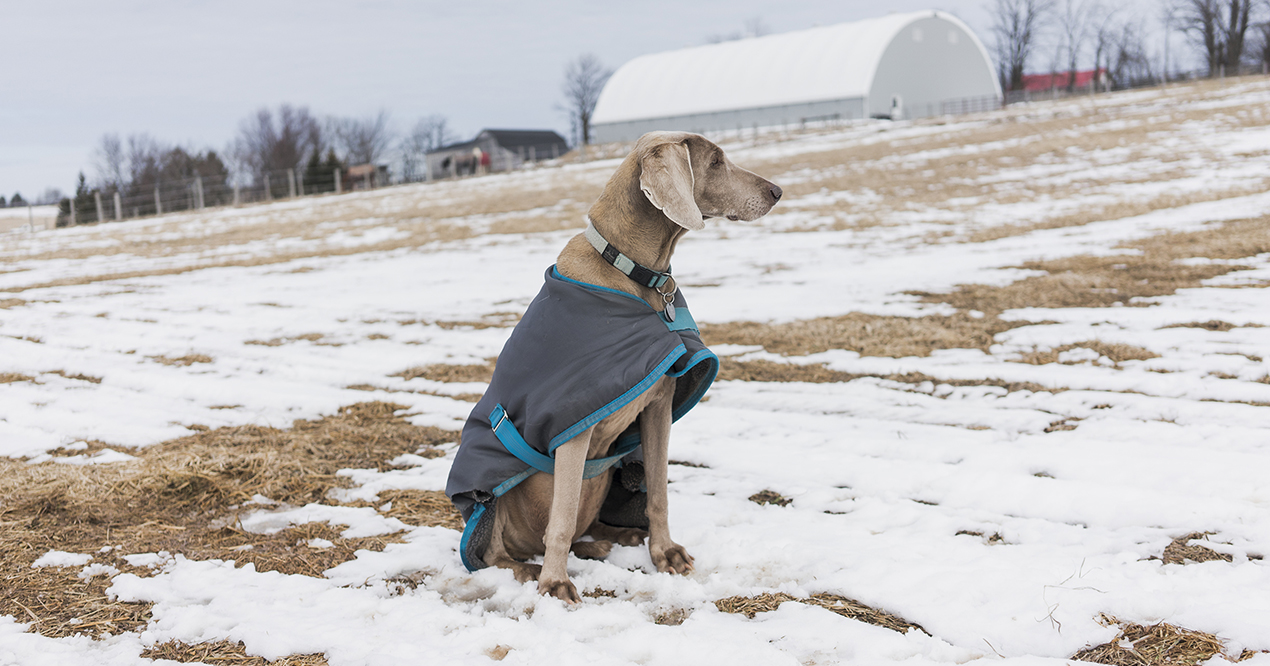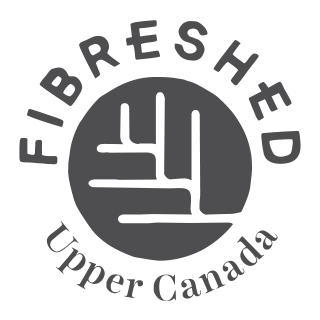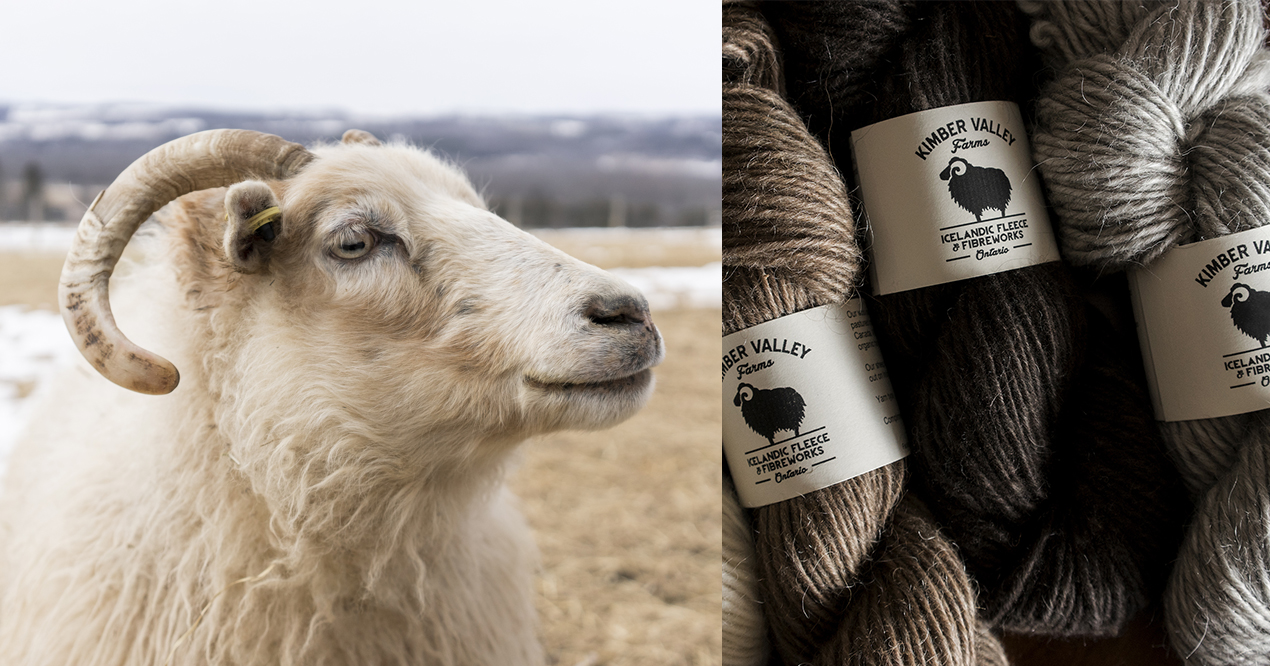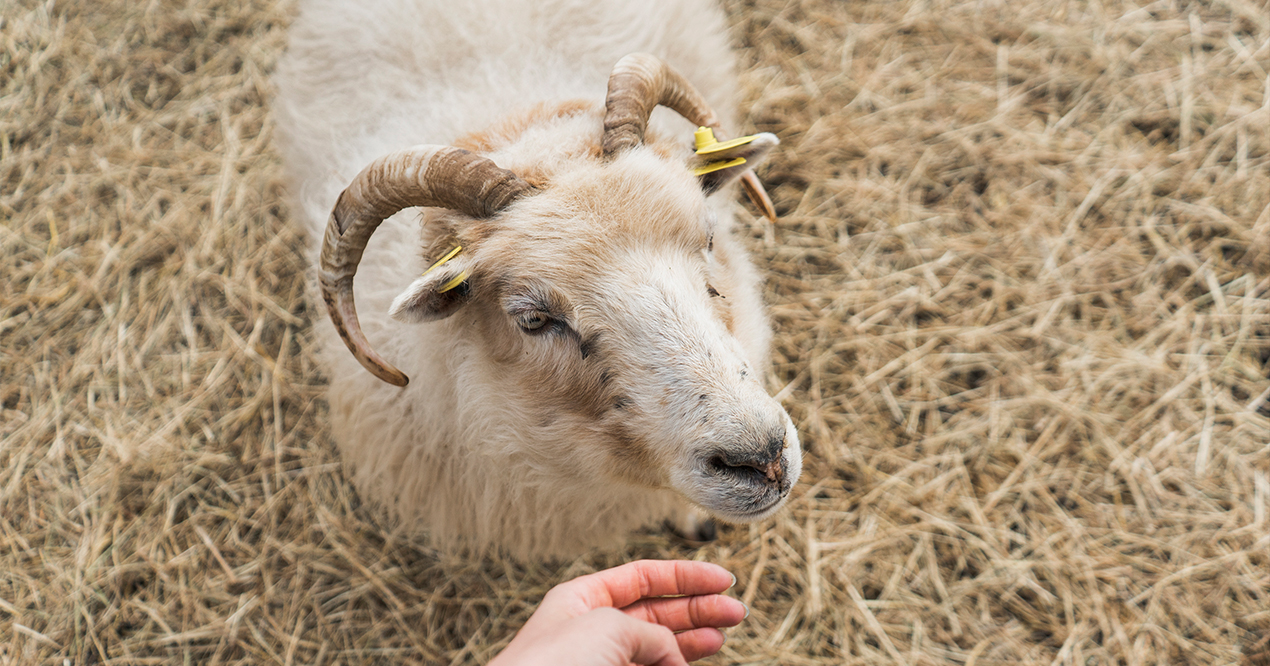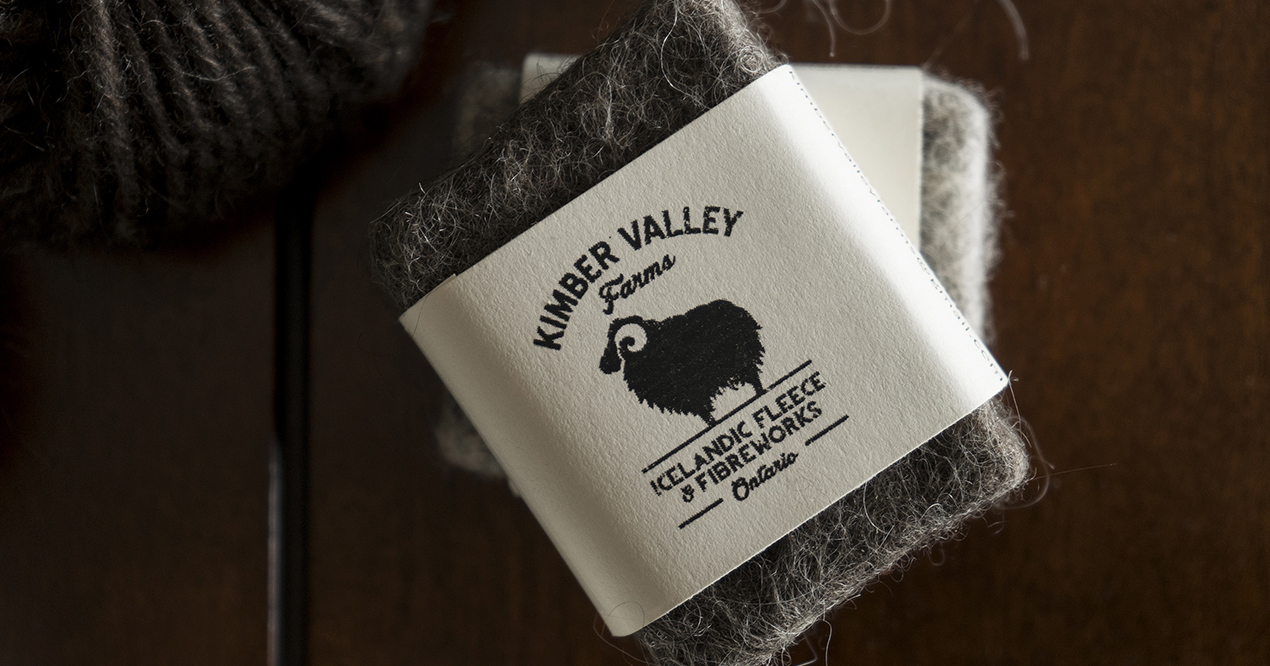Ontario winters are harsh but beautiful. As spring begins, the sky is bright blue but the air is still crisp and the fields still dusted with snow. Kimber Valley Farm, located on a hillside in Beaver Valley Ontario is almost fully thawed. A deep sense of care and passion for the animals and the traditional roots of raising Icelandic sheep can be felt through simply spending some time with Lynn and Catherine.
Written and Photographed by Emily Niell
Starting at the beginning, how did you end up in Beaver Valley Ontario? Do you have a history with farming?
After living out west for 13 years, in 2012, it was time for me to move back home to Ontario. By now, Catherine and I had been together for 5 years, and were both excited about finding a farm in Ontario. I was familiar with the Valley and the Collingwood area both through equestrian competitions as well as skiing when I was younger. It is such a beautiful area and has become an all-season destination area for many people from the city. While we had initially looked for farms closer to the Guelph area, they were too expensive for us so we looked further north.
After much searching, we found the perfect place in the Beaver Valley. At 91 acres, it had plenty of room for our animals and plenty of room for us to ‘play’. We both love the outdoors! At the time, we were up to 3 horses, several dogs and cats but no sheep.
Both Catherine and I have a history of farming in our families. While neither of us grew up on a farm, both of us have parents and grandparents that did. We both have many great childhood memories of spending time on the farm with animals. From the time I was a small child, I dreamed of having my own horse and farm one day. My parents were very encouraging of me to hold on to that dream and work towards it.
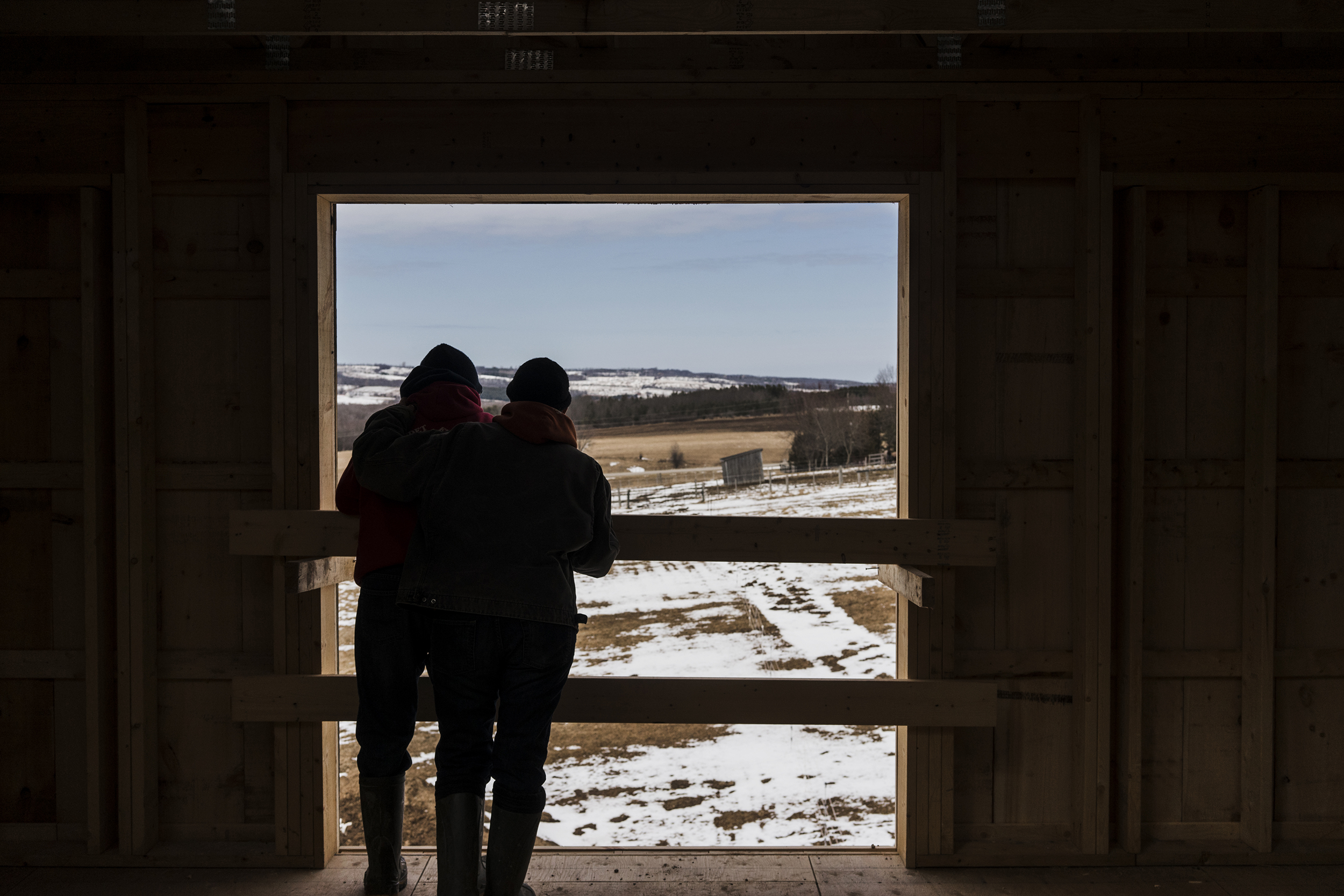
What drew you to Icelandic Sheep?
Our first venture into Shepherding began with two, three-day old ram lambs that were rejected by their moms. While they were owned by a relative, Catherine agreed to babysit them and bottle feed them until they were old enough to be on their own, at which time they would be returned. That day never came! They wormed their way into our hearts and quickly became part of our family. After several years enjoying our “pet” sheep and after much thought, we decided that we wanted to get more.
My Amma was born in Iceland and came to Canada as a young girl with her father and twin brothers after her mother passed away. I have many fond memories of my Amma, the Icelandic sweaters and socks that she used to knit us, her Vinarterta (Icelandic cake) and her stories of Iceland. With our decision to get more sheep, I wanted to further connect with my heritage and get Icelandic sheep. Learning more about this unique, versatile and beautiful heritage breed, only reinforced that decision.
Can you describe some of the key differences between Icelandic sheep and some of the more common breeds in Ontario?
“The Icelandic sheep is one of the world’s oldest and purest breeds of sheep. Throughout its 1100 years of history, the Icelandic breed has been truly triple-purpose, treasured for its meat, fiber and milk.” Icelandic Sheep Breeders of North America
Icelandic sheep are a triple purpose breed, known for their quality meat, wool and milk. Where other breeds tend to stand out in one of these areas or another, Icelandics are well known for all three. They are considered to be a medium breed in size. Unlike some other breeds, it is very common for Icelandics to have twins and even triplets on a regular basis. They are very good mothers and usually have plenty of milk for all of their lambs. They are usually self-sufficient when lambing. Lambs tend to be small at birth but are lively and quick to get up to nurse. They do very well on pasture and do not require a grain diet.
Icelandic lamb tends to be leaner and milder tasting that other lamb.
Icelandic sheep have a dual coat which comes in a variety of beautiful and unique colours. They range from creamy white to many shades of browns, greys, blacks and multi-colour. The long outer fibre layer is called the Tog and the shorter, soft undercoat is called the Thel. When spun together, the result is an airy, lightweight ‘lopi’ yarn that is strong, durable and warm. Traditional Icelandic sweaters are made with lopi yarn. The fleece is very versatile as the fibres can also be spun separately. Because of the versatility, unique assortment of colours and fibre properties, Icelandic fleece has become a favourite for many handspinners, knitters, fibre artists and felters.
Unlike many other North American breeds, Icelandics are typically shorn twice a year, once in the spring and once in the fall. Their wool can grow 6”- 8” in 6 months. If left unshorn, while they do have a natural ‘wool break’ in the early spring, the remaining wool tends to felt and get matted quite easily (That’s why it’s so good for felting projects!), leaving them hot, itchy somewhat uncomfortable over the summer. It doesn’t all break off and doesn’t break evenly. Shearing them makes them feel much better and helps to ensure a much healthier wool coat. While they are also shorn in the fall, by the time the cold winter weather sets in, their fleece has grown enough to keep them warm and cozy through the long winter days.
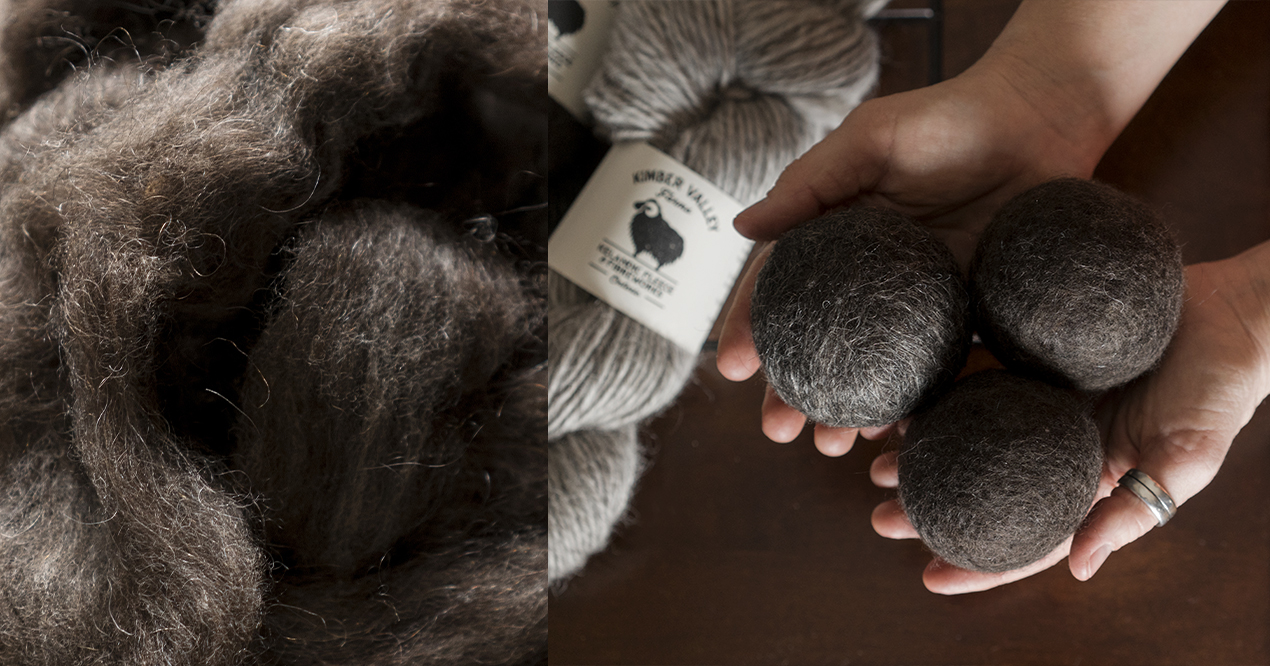
What is the life cycle of a sheep?
Icelandic ewes are seasonal breeders (the rams are happy to breed any time of year!), with their breeding cycles typically starting in late October or early November. Their cycle is approximately 17 days, of which they are in heat and receptive to the ram for 24-36 hours. They will continue to come into heat every 17 days until either they are pregnant or until spring, at which time they stop cycling.
Around December 1st – After much thought and record keeping, we separate our sheep into breeding groups. Each group includes one ram and a selection of ewes. We need to be careful to ensure that the breeding groups are not in adjacent fields as the rams will smash through the fences to get at each others ewes. We usually keep our breeding groups together for 35-40 days. This ensures that the rams have 2 full cycles to get lucky and the ewes to get pregnant! It also means that we know that our lambing season will last for 35-40 days. The gestation period for our ewes is typically between 142 and 144 days, which is 3-5 days shorter than average of all breeds.
Early to mid April – Prior to lambing in early May, we have all of our sheep sheared. There are many benefits to shearing before lambing. Of particular note, it is much easier for a newborn lamb to find her/his mom’s milk if doesn’t have to dig through 6 to 8 inches of wool and poop tags to find it! Getting the lamb to nurse as quickly as possible is critical to ensuring its health and survival. It is also much easier to see what’s going on during the lambing process and to ensure that there are no birthing problems.
Summer – All of the ewes and lambs spend the summer on fresh pasture.
Early to mid October – All of the sheep are sheared again. Typically, this clip is very clean as the sheep have been on fresh pasture all summer and therefore have very little vegetable matter in their wool. This is the lambs first shearing and the wool is extremely soft!
From time to time we sell registered breeding stock. As we are in the process of growing our flock, at the moment we are keeping all of our ewes. However, it is very hard on everyone (sheep included) to keep too many rams, so we will selectively sell them to others that are interested in raising this beautiful breed.
Approximately how much yarn will your one sheep yield in a season?
Icelandic sheep will typically produce 5-7 pounds of raw fibre per year per sheep. We have a small flock but are continuing to grow each year. Last year we produced approximately 145 pounds of fibre. This year we should be at about 220 lbs. and onward and upward from here! Once processing is completed in the mill, the finished weight is about 2/3rd that of the starting weight. As the lanolin, dirt and vegetable matter are washed out, you lose some weight. You also lose any felted/matted wool and short fibres in the processing. So, if you get 6 pounds of raw fleece from a sheep, you’ll have approximately 4 pounds or 1,814 grams of processed fibre. Our skeins are typically 110g each, so you’ll get 16.5 skeins per sheep per year. Enough for 2 Icelandic sweaters!
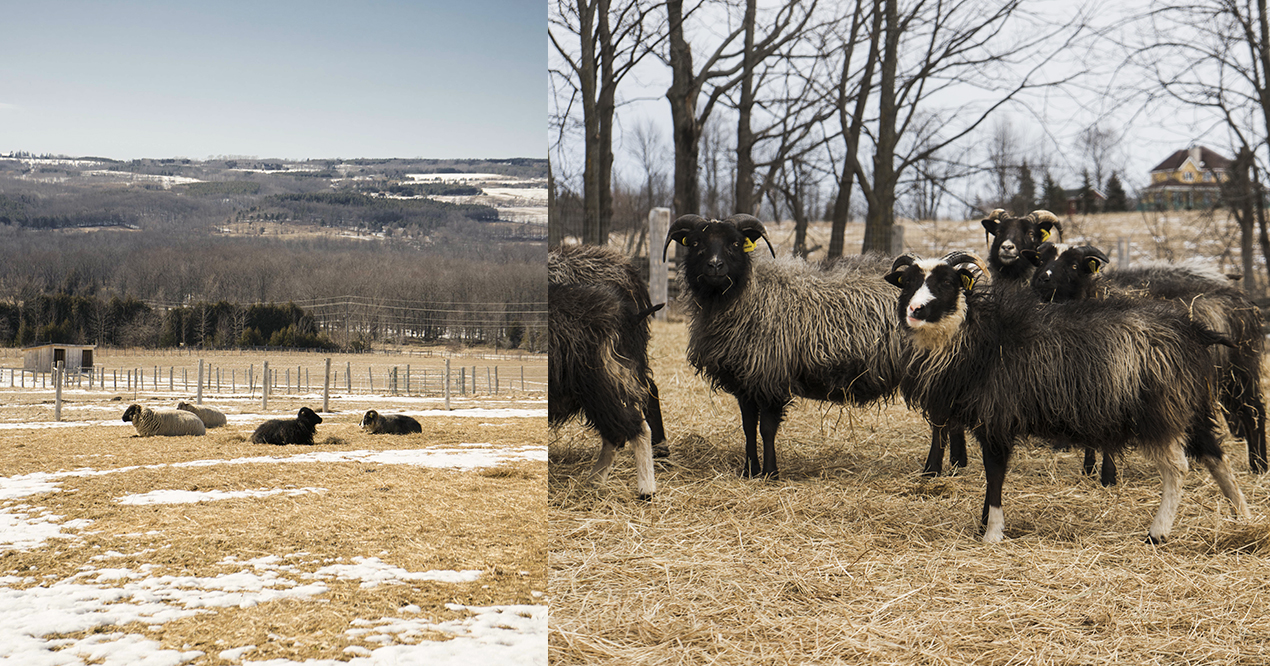
For those of us who are new to the world of fibre, how would you describe the differences between hair vs wool vs fur?
I’m not the expert on the science of this by any means! And there is a lot of science. I believe that all three are made of the same protein, namely Keratin. Generally speaking, my understanding has always been that fur will typically only grow to a certain length and then stop growing, while wool and hair will continue to grow. Animals with fur will typically have a major shed once a year. This varies depending on species and genetics. Hair is typically less dense than wool and fur. Wool tends to have a crimp to it and the fibres are finer than ‘hair’. There are tons of opinions and lots of science about this online. I just know that my sheep grow wool!
I get the impression that sustainability and environmentalism are important to you. How do they fit into what you are doing on the farm?
We are on a path of continuous learning and improvement! By no means to we have things all figured out. But we are really trying to tread lightly and to be good stewards of our land and our animals. In all that we do, we try to minimize the impact on our little piece of the planet. In the past year, we went through an education, needs analysis and action plan implementation process which resulted in us receiving our Environmental Farm Plan Certification. This process helps us to identify environmental risks and opportunities on our farm.
One of the things that came out of this process was the identification of several ‘Species at Risk’ that frequent our property. By having an awareness of this, we have been able to implement several projects on the farm that will help to protect these species. One such species in particular is the Bobolink, which is “threatened” in Ontario. This bird is a very frequent visitor to our farm in the late spring and early summer. It nests in the tall spring grass and lays its eggs there. By learning about this, we have been able to help the Bobolink population by ensuring the fledglings are well on their way before haying our field. Early haying is one of the top reasons why nesting adult Bobolinks are inadvertently killed and/or eggs and nests destroyed.
Our hay fields were certified organic up until 2 years ago, but the cost to continue the formal certification was prohibitive to us. So, while our hay is organic and we do not use any chemical fertilizers, pesticides or insecticides, we no longer have official certification.
There are many people out there that may not understand why wool from an Ontario farmer isn’t in the same price range as a ball of man-made wool. Thankfully, there is a growing awareness and movement back to natural fibres. Just like the slow food movement, people are starting to realize the environmental, social and health benefits of slow fashion. There are many articles and much research on the harmful environmental effects of synthetic fibres in clothes and other products we use. I just read another local article this past weekend. It was about the amount of synthetic fibres showing up in our drinking water and in aquatic animals. This is very close to home!
http://www.owensoundsuntimes.com/2018/04/11/science-project-finds-microfibres-in-laundry-water
We want to support the slow fibre movement and to help raise awareness of it. Educating people on the true (and often hidden) cradle to grave cost of many man made products will go a long way. This in turn will help us to continue what we are doing and to grow as more people choose to support independent farmers and natural farm grown fibres.
We’d like to help people get closer to their food and their clothes. We have become so far removed, that often people have no idea what it’s like to be on a farm around animals; to see where their food and/or fibre comes from. It’s so cool to see the smile on people’s faces when they actually see the sheep that produced the wool for their hat or sweater. It gives people a whole new appreciation of farming and of the work that goes into it. We want to help people get away from the throw-away mentality and back to appreciating the land and the animals that our food and fibres come from. Natural, renewable fibres last for decades. And when fashion changes, they can be upcycled into something new!
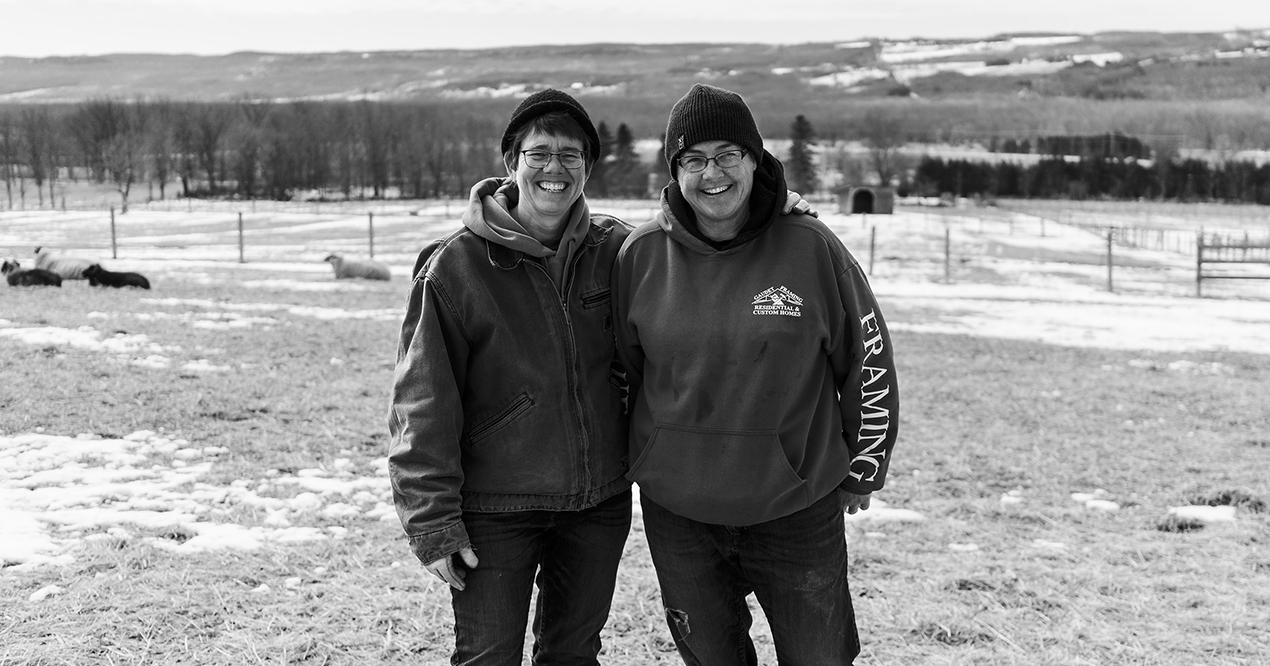
What are some of the challenges you face as a Shepard?
There has been much to learn. One of the biggest challenges that we face is predators. We want our sheep to live as naturally as possible and as such they have access to the outdoors and their large shelters 24×7. Part of our property is forested, which means we have an abundance of wildlife, including coyotes. In order to help protect our sheep, we have a donkey (Shasta) in with the boys and a llama (Isaac) in with the girls. Donkeys can be very aggressive with canines and will strike out, chase and/or kick them. Llamas are very protective as well and will chase and bite at canines. They are both known to be useful sheep protectors. We also have motion lights on all of the shelters, which helps act as a deterrent. This winter, we saw tracks from a pack of coyotes that went right beside the sheep field! We shut the sheep up at night for a few weeks until the pack changed their travel route. Thankfully, everyone was safe.
Another big challenge has been managing the rams. While the ewes are seasonal breeders, the rams are more than happy to breed any time of the year. Ram lambs can start breeding as young as 5 months old. Outside of breeding season, our rams and ewes are in separate pastures. Being that some of them are related, thought and planning has to go into the breeding program. We have also spent a lot of time and effort on ensuring we have an adequate number of fields and that they are fenced appropriately. When the girls come into heat, the rams will smash through fences to get to them. They will also aggressively ram each other if there is a ewe present.
Another challenge we have is keeping the fleece as clean and healthy as possible. We take great care when feeding our sheep and try to avoid any hay falling on top of them. When they eat beside each other, they are not as careful! We have learned from trial and error and have also had some help and advice from other sheep farmers. We feed them good quality organic hay that we harvest from our property and ensure that they always have free access to vitamins and minerals.
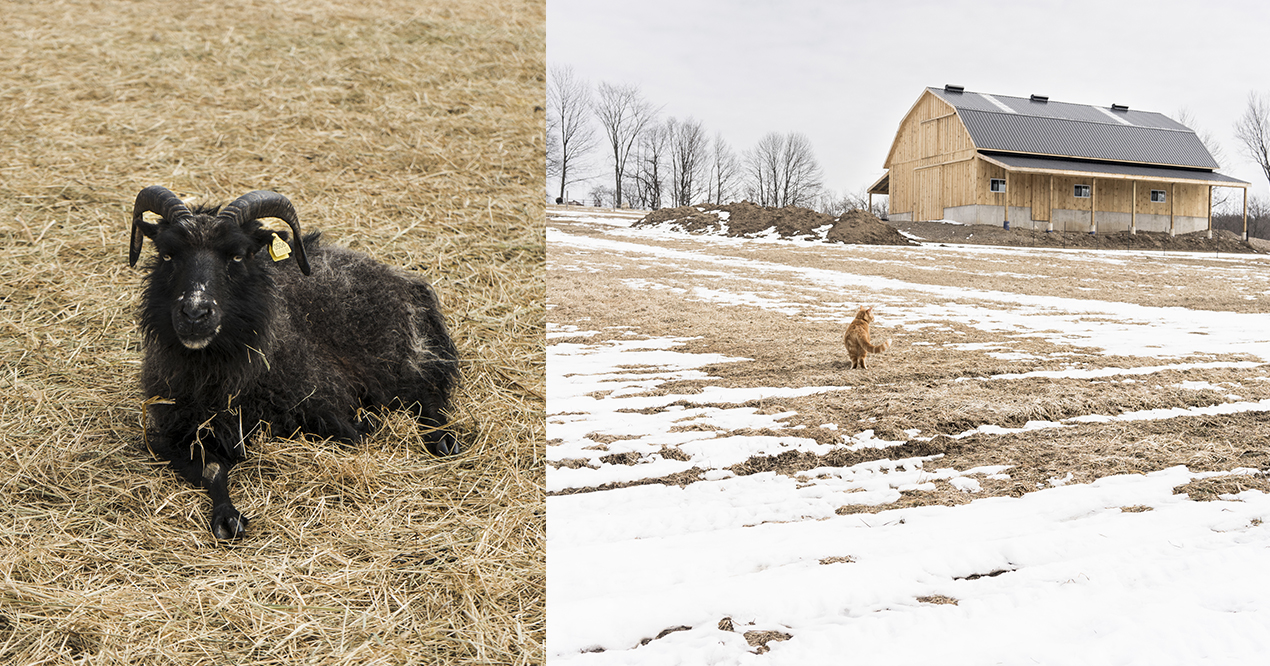
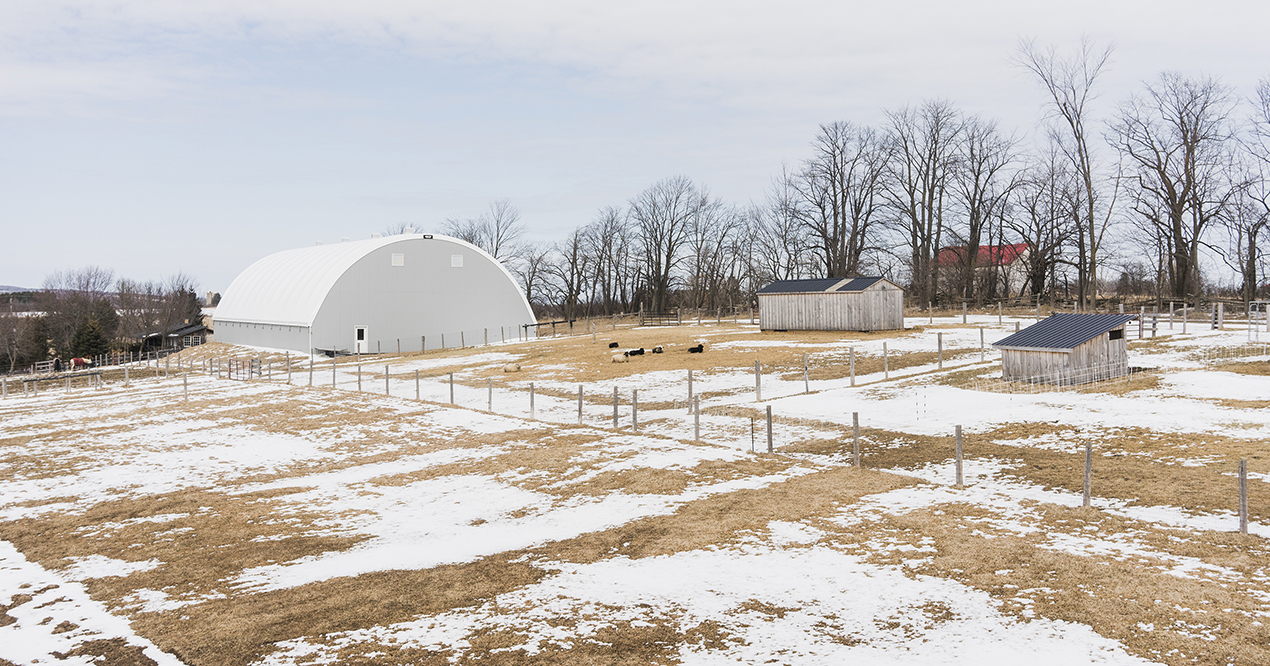
Whats next for you on the farm?
We plan to continue to grow and to figure out the formula to make the farm financially sustainable. Both of us work off of the farm at the moment, but we hope that can change. Our goal is to have one full time income from the farm within the next few years. This will include income from our wool and fibre products, selling registered Icelandic breeding stock as well as sales of our organic hay. In addition to these products, we plan to bring in additional revenue by hosting farm workshops, educational events and we will soon have several vacation rental cabins on the property. We feel so blessed to have this farm and our animals and want to share the experience with others. With all that this area has to offer in terms of nature, outdoor sports, art, food, micro wineries and craft breweries, there are more and more people visiting the area each year. We hope to become one of the destination spots for many of these visitors and/or weekend residents.
Visit Kimber Valley Farms facebook page here to learn more!
